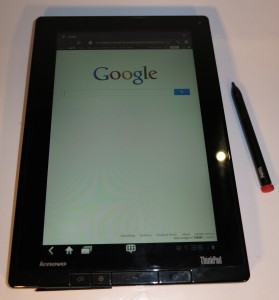Article
My Comments
I have observed over the past year that the Android platform has yielded a run of highly-capable mobile-computing devices that are placing the Apple iPhone and iPad on notice. These devices in the form of the HTC One X smartphone; the Samsung Galaxy S3 and Galaxy Note smartphones; the Google Nexus 7 tablet and the ASUS EeePad Transformer Prime tablet are yielding what high-performance and high-value are about. The devices that I have mentioned in this list implement highly-strung CPUs and graphics subsystems that can allow them to do advanced tasks like action-rich games or smooth video playback.
This has also been augmented by various features that the Android ecosystem offers over the iOS ecosystem. For example, most of these devices offer a user-replaceable battery. This was demonstrable with my Samsung Galaxy S smartphone where the battery failed to hold its charge and I had to use an external battery pack all the time to gain real use out of it. Then I just went to a mobile phone dealer and paid AUD$40 for an original battery for the phone on Thursday. iPhone users would have had to pony up more than this and be without their phone for a significant amount of time to replace the battery under this circumstance.
Another example is the fact that most Android devices use a user-replaceable microSD or similar memory card as well as onboard storage. This means that you could use effectively an infinite amount of memory with your device by purchasing extra memory cards. Infact I use different microSD cards in a similar manner to those cassette tapes or MiniDiscs that we remember where I have one card carrying music of one kind and another carrying music of another kind.
Speaking of music, you can add your media content to your Android device using your computer’s file manager or media management program if you have your microSD card in your laptop’s SD card slot or a USB card reader; or your Android device tethered to your computer via its USB cable. These scenarios present the device to the computer effectively as a floppy disk or USB memory stick. This is also a similar path for offloading images you took with your Android device. Similarly, if you run TwonkyMobile on your Android phone, you may be able to have the ability to add music to your phone’s collection by picking the tracks you want from your DLNA-hosted music collection and selecting “Copy to your device”.
The user interface can be easily customised by the manufacturer or the user through the use of animated live wallpapers, display and control widgets or similar items. This yields a sense of flexibility to the operating environment that the typical Android device presents, such as a “dashboard” view of battery status, operating modes and social-network activity.
There is even competition on the app and media storefront for these devices where competing app-store providers such as manufacturer-hosted or carrier-hosted stores can exist on the device’s app list. But there isn’t an online newsstand for the Android platform that can rival what Apple offers and this may limit the distribution of digital newspapers and magazines to these tablets.
But what the Android platform offers in value, capability and performance is making Apple and their fanbois worried so much that Apple have been litigating against Samsung and other Android device manufacturers on clams of patent infringement. Some cases such as the UK legal activity have been struck down due to legal assessment that the devices didn’t copy Apple designs.
But I have also observed commentary, including an Age article about the Samsung Galaxy S3, about people who have jumped from the iPhone to the Android platform due to the liberating characteristics that this platform offers.



